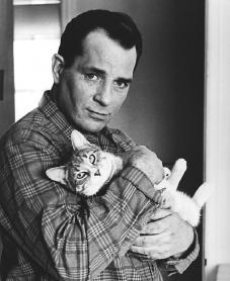
Email: reecejordan98@hotmail.co.uk
Total Article : 168
About Me:18-year-old sixth form student, studying English Literature, History and Government and Politics. My articles will broadly cover topics from the current affairs of politics to reviews of books and albums, as well as adding my own creative pieces, whether it be short fiction or general opinion.

Jack Kerouac, ‘King of the Beats’, sits in his mother’s house at the age of 40, grappling with the over-bearing facets of maintaining the hustle and bustle that comes with the life seen in his previous works, portrayed through the Duluoz legend. He’s a big name; his most famous work, On The Road, has seeped into American youth culture, and now ‘they all want a piece of Jack’, believing him to be 15 years his junior, mud-faced and having a perpetual smile. Instead he is depressed, a man imploding with the pressure of fame and the inability to cope with a drinking problem that ‘makes [his] brain soft’ and the only viable means of quieting this voracious appetite for his own life.
Thus, life throws him an ultimatum: ‘escape or die’. This ‘escape’ comes in the form of Big Sur, a mountainous terrain wherein lies a half-solitary cabin fit with firewood, half-read books and the odd rat to feed – a beat-hermit’s supposed dream. But you begin to see that Big Sur shows not the tranquillity of retiring from such a zealous lifestyle, but the way in which such a lifestyle, with its hedonistic quality, embeds itself, almost parasitically, into those that choose to follow it. In the first few weeks of his stay in the cabin Kerouac finds himself finding, as always, transcendence in the beauty of nature, touching beautifully on the simple harmony of the world, and his infantile curiosity for everything makes for a compelling read. But soon the cracks begin to show. This self-imposed exile conflicts with the gregarious nature we’ve come to know and love Kerouac for, and he recognises it too. Nature itself becomes his enemy, the wind and the sea ordering him to leave and live his life in the city. And so he does, immediately.
As the novel progresses, though, we understand that this is not a revelatory exploration revolving around the beat lifestyle being one of permanence, but rather how, with age and a changing society, it is slowly being eroded in 1960s America. A prominent example is in Kerouac’s struggle to find someone willing to pick him up as a hitchhiker out of, presumably, fear of the unknown; this is now a changing, cautious world where contempt for societal law is no longer a viable way of living.
What perhaps is most the most striking difference with Big Sur in comparison to Kerouac’s earlier works is the omnipresence of death. This comes not only in the form of Kerouac’s heartbreak in losing a ‘companion’ in his family’s cat, but also the exposed mortality of his presumed life-long relationships, none more so than Neal Cassady (under the pseudonym Cody in the novel), his adventurous friend, his muse and ultimate companion. Cassady is harboured by his responsibility for bringing up a family and finding a job, forever pining for his moments with Jack to be ‘just like it was, just how we used to’.
But things have changed now. Therein lies the novels main poignancy in that, in contrast to the Duluoz legend that thrived so much life, it ends with so much death.
Image Credits: www.notablebiographies.com

0 Comment:
Be the first one to comment on this article.